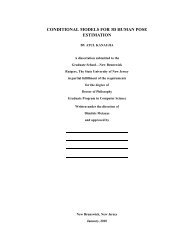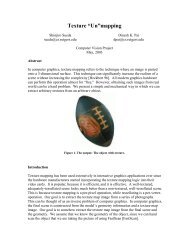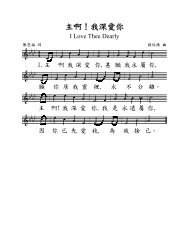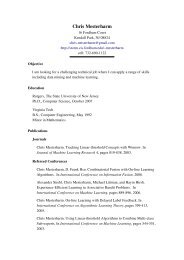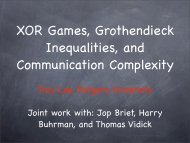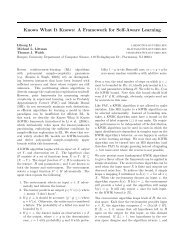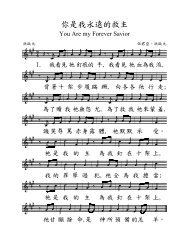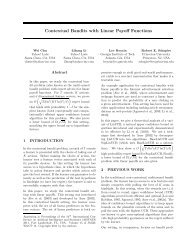Deformable-model based Textured Object Segmentation - CiteSeerX
Deformable-model based Textured Object Segmentation - CiteSeerX
Deformable-model based Textured Object Segmentation - CiteSeerX
Create successful ePaper yourself
Turn your PDF publications into a flip-book with our unique Google optimized e-Paper software.
(a) (b) (c)<br />
(d)<br />
(e)<br />
Fig. 1. (a) the original cheetah image. Initial Model: outer large circle; Texon scale: inner small<br />
circle, (b) likelihood map computed <strong>based</strong> on texon statistics, (c) updated likelihood map after<br />
applying BP <strong>based</strong> MRF, (d) an intermediate <strong>model</strong>, (e) converged <strong>model</strong>.<br />
2. Determine a “best” natural scale for the texture elements that are basic building<br />
blocks of the <strong>model</strong> interior texture. We call such texture elements “texons”, following<br />
the naming convention in [10, 13, 28]. In Fig. 1(a), the determined texon<br />
scale is indicated by the inner smaller circle.<br />
3. Compute nonparametric statistics of the <strong>model</strong>-interior texons, either on intensity<br />
or on Gabor filter responses depending on the texon scale, and compare it with<br />
local-neighborhood statistics surrounding each pixel in the image. Thereafter a likelihood<br />
map is generated which measures the consistency of each local patch texture<br />
with the <strong>model</strong>-interior texture. Fig. 1(b) shows an example of such computed likelihood<br />
map given the <strong>model</strong> in Fig. 1(a).<br />
4. Use the Belief-Propagation implementation of Markov Random Fields to update<br />
the likelihood map, taking into account contextual information from neighboring<br />
texture patches. For the cheetah image, the updated likelihood map is shown in Fig.<br />
1(c).<br />
5. Evolve the deformable <strong>model</strong>, for a fixed number of iterations, toward object boundary<br />
<strong>based</strong> on <strong>model</strong> dynamics derived from both texture energy terms defined on<br />
the likelihood map and balloon-force energy terms defined on the <strong>model</strong> geometry.<br />
In Fig. 1(d), an intermediate <strong>model</strong> is drawn on the image.<br />
6. Repeat steps 3-5 until convergence (e.g. when <strong>model</strong> deformation between iterations<br />
is sufficiently small). The converged <strong>model</strong> on the cheetah image is shown in<br />
Fig. 1(e).




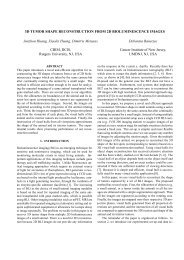
![Twitter[PDF]](https://img.yumpu.com/25710531/1/190x143/twitterpdf.jpg?quality=85)
